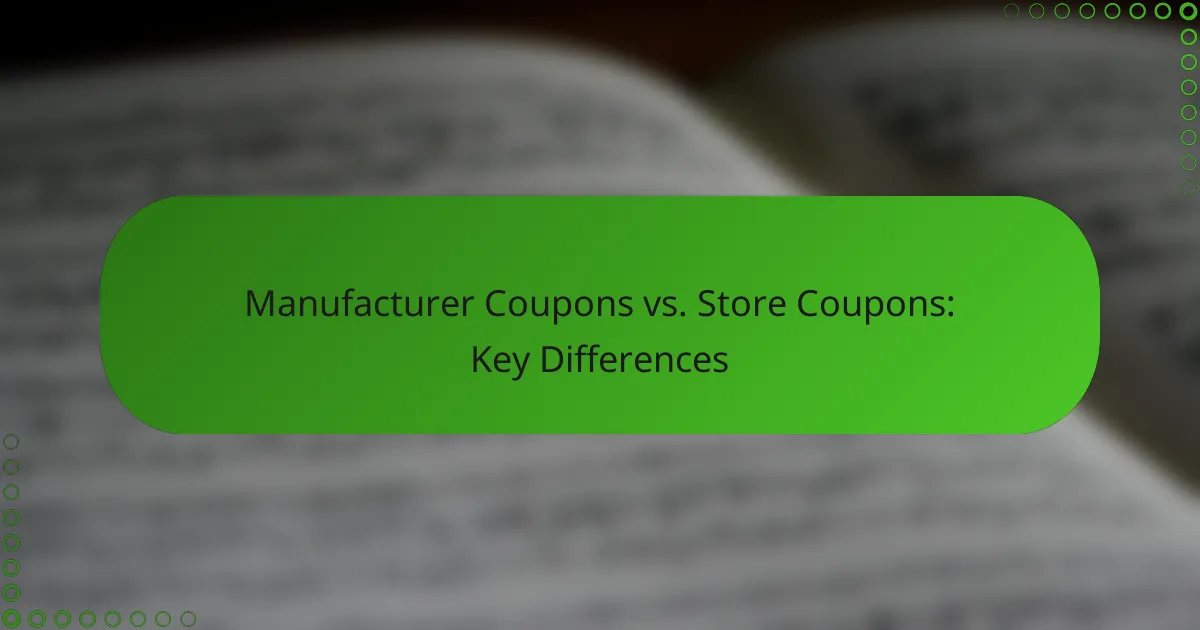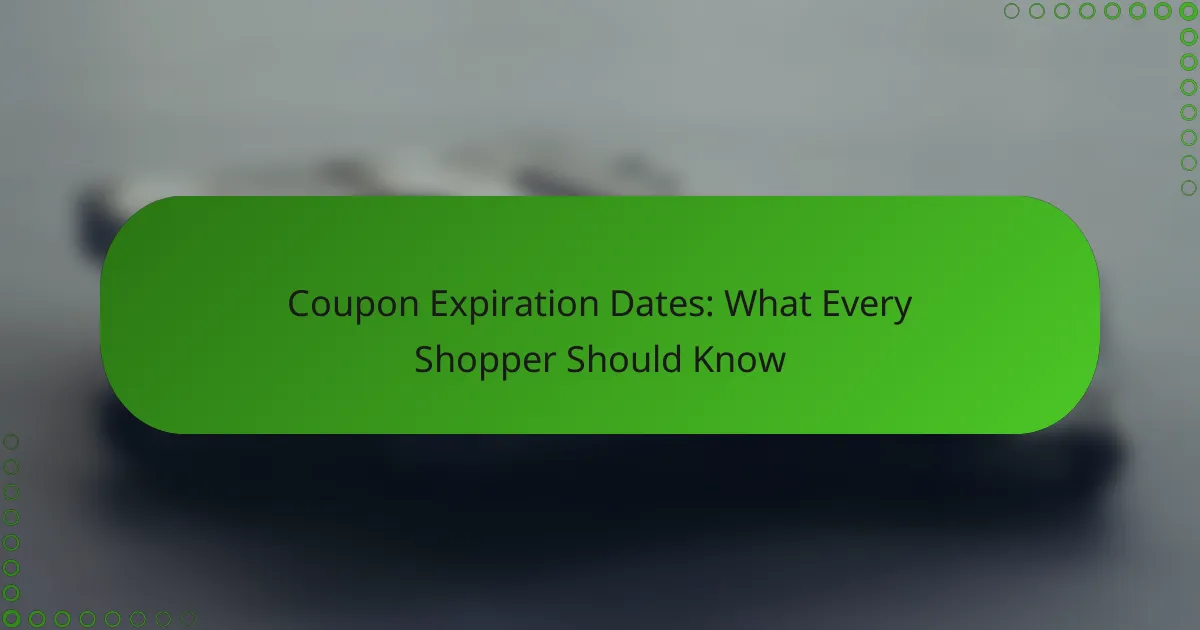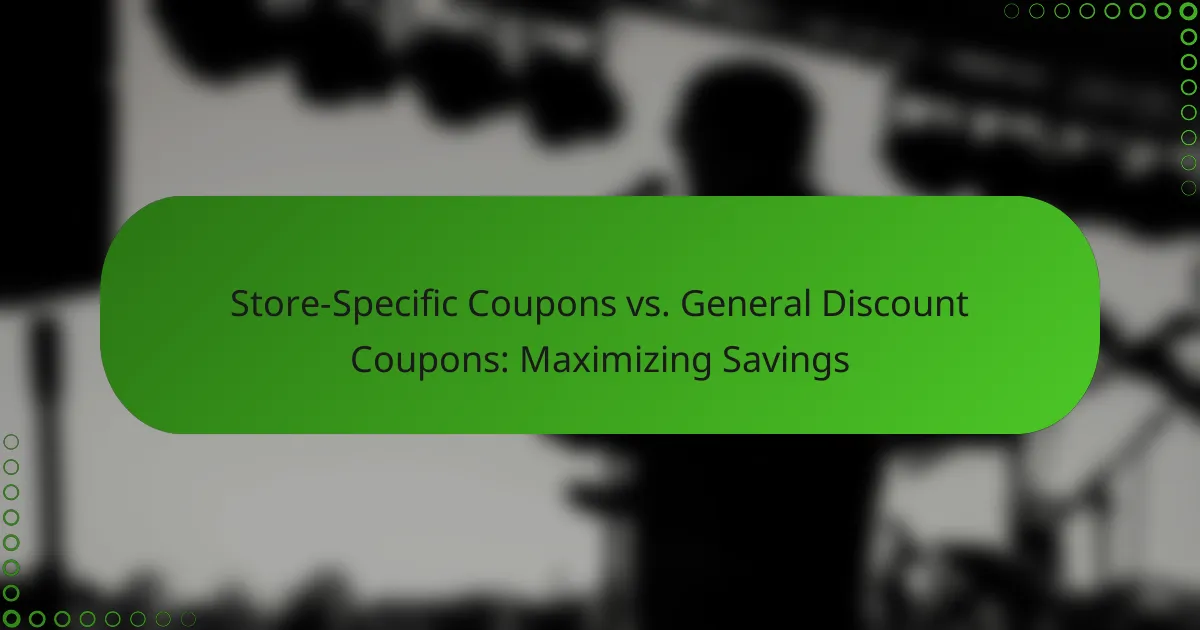Seasonal coupons play a crucial role in shaping holiday shopping budgets by offering consumers valuable savings on a wide range of products. These discounts not only encourage shoppers to spend more but also enhance the overall shopping experience, especially when combined with digital platforms and cashback offers. By strategically utilizing these coupons, consumers can effectively manage their holiday expenses and maximize their savings.

How do seasonal coupons affect holiday shopping budgets in the US?
Seasonal coupons significantly impact holiday shopping budgets in the US by providing consumers with opportunities to save money on both essential and non-essential items. These discounts can lead to increased spending overall, as shoppers are more likely to purchase additional items when they perceive they are getting a good deal.
Increased savings on essential purchases
Seasonal coupons often target essential items such as groceries, household goods, and personal care products. By utilizing these coupons, shoppers can save anywhere from 10% to 30% on their necessary purchases, helping to stretch their holiday budgets further.
For example, a family might use coupons to buy holiday meal ingredients, reducing their grocery bill significantly. This allows them to allocate more of their budget to gifts or other holiday-related expenses.
Higher consumer spending during holidays
While seasonal coupons encourage savings, they also contribute to higher overall consumer spending during the holiday season. Shoppers, motivated by discounts, may buy more items than initially planned, leading to an increase in total expenditure.
Research indicates that consumers can spend up to 20% more during the holidays when using coupons, as the perceived savings can lead to impulse purchases. To manage this, shoppers should set a clear budget and prioritize essential purchases before indulging in non-essentials.
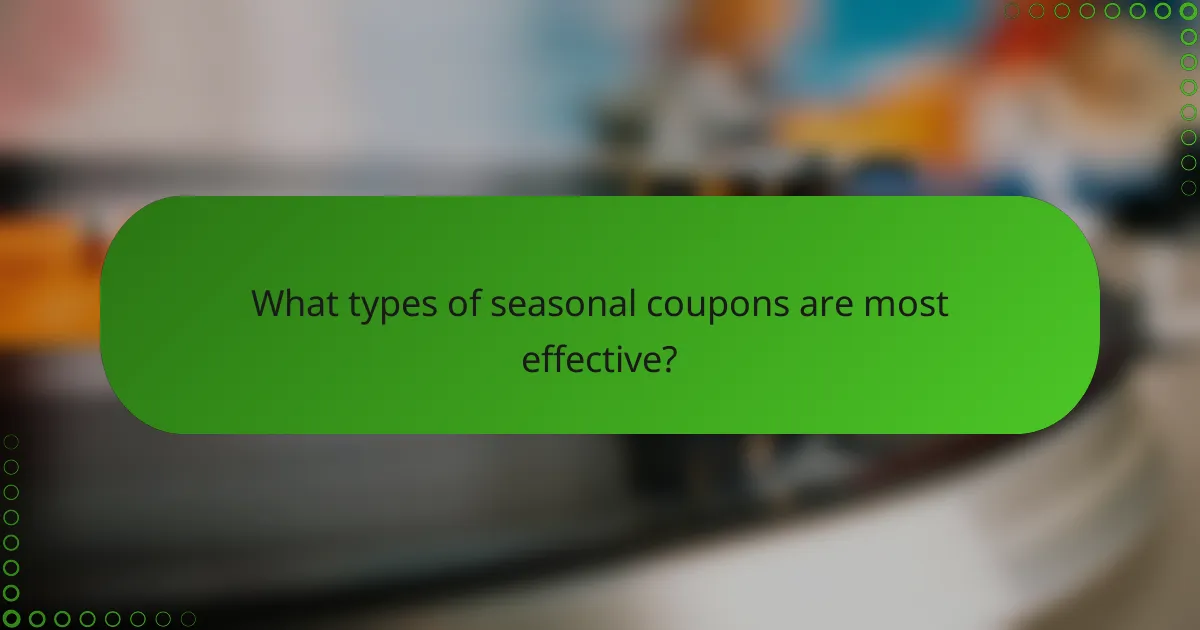
What types of seasonal coupons are most effective?
Seasonal coupons that provide significant discounts or cashback offers are particularly effective during holiday shopping. Digital coupons and cashback platforms are among the most popular options, as they offer convenience and substantial savings for consumers.
Digital coupons from retailers like Target
Digital coupons from retailers such as Target can provide shoppers with immediate savings on a wide range of products. These coupons are often available through the retailer’s app or website and can be applied directly at checkout, making them easy to use.
To maximize savings, shoppers should regularly check for new digital coupon offerings, especially during peak shopping seasons. It’s also advisable to combine these coupons with sales for even greater discounts, as many retailers allow stacking of offers.
Cashback offers from platforms like Rakuten
Cashback offers from platforms like Rakuten allow consumers to earn a percentage of their purchase back after shopping at participating retailers. This can be a great way to save money on holiday purchases, as cashback rates can vary from around 1% to 10% or more, depending on the retailer and the promotion.
To take full advantage of cashback offers, shoppers should sign up for an account on the cashback platform and browse available deals before making purchases. Additionally, using a credit card that offers rewards can further enhance savings when combined with cashback offers.
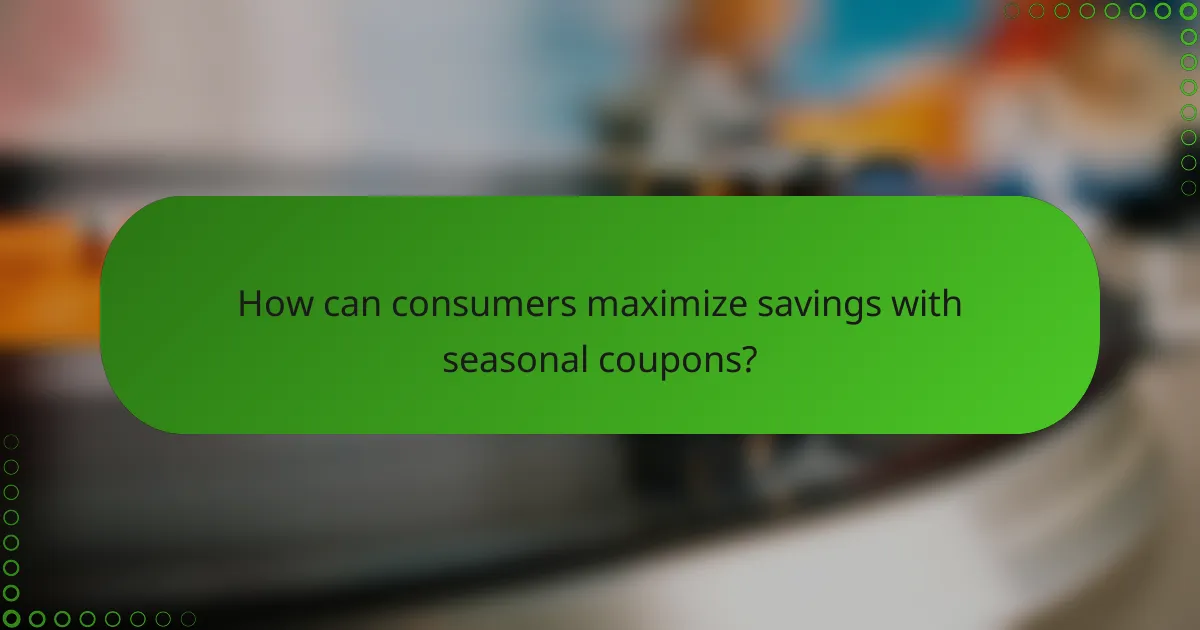
How can consumers maximize savings with seasonal coupons?
Consumers can maximize savings with seasonal coupons by strategically planning their shopping around promotional events and utilizing various tools to enhance their couponing efforts. By combining coupons with sales and leveraging technology, shoppers can significantly reduce their holiday spending.
Combining coupons with sales events
Combining coupons with sales events is a powerful way to stretch your holiday shopping budget. When a store offers a sale, applying a coupon on top of that discount can lead to substantial savings. For example, if a retailer has a 20% off sale and you have a coupon for an additional 10% off, you could save 28% on your purchase instead of just 20%.
To maximize this strategy, keep an eye on major sales events like Black Friday, Cyber Monday, and end-of-season sales. Many retailers allow stacking coupons with sale prices, but be sure to check the store’s policy, as some may have restrictions.
Using coupon apps like Honey
Coupon apps like Honey can simplify the process of finding and applying discounts while shopping online. These apps automatically search for the best available coupons at checkout, saving you time and effort. Honey, for example, can apply multiple coupon codes to find the highest discount, which can be particularly useful during the busy holiday shopping season.
Additionally, many coupon apps offer rewards or cashback options, adding another layer of savings. Be sure to download and set up these apps before the holiday season begins to take full advantage of their features and maximize your savings.

What are the trends in seasonal coupon usage?
Seasonal coupon usage has seen significant changes, particularly with the rise of digital platforms and consumer preferences. Shoppers increasingly rely on coupons during holidays to stretch their budgets, making it essential for retailers to adapt their strategies accordingly.
Increased mobile coupon adoption
Mobile coupon adoption has surged as consumers prefer the convenience of accessing discounts directly from their smartphones. Many retailers now offer exclusive mobile coupons that can be redeemed at checkout, making it easier for shoppers to save while on the go.
To maximize savings, users should download retailer apps and subscribe to notifications for timely alerts on seasonal deals. This trend is particularly evident during major shopping events like Black Friday and Cyber Monday, where mobile coupons can lead to substantial savings.
Shift towards personalized offers
Personalized offers have become a key trend in seasonal coupon usage, as retailers leverage data analytics to tailor discounts to individual preferences. By analyzing past purchase behavior, companies can provide targeted coupons that resonate with specific customer needs.
Shoppers should take advantage of loyalty programs that often include personalized discounts, enhancing their holiday shopping experience. This shift not only benefits consumers but also helps retailers increase customer loyalty and drive sales during peak seasons.
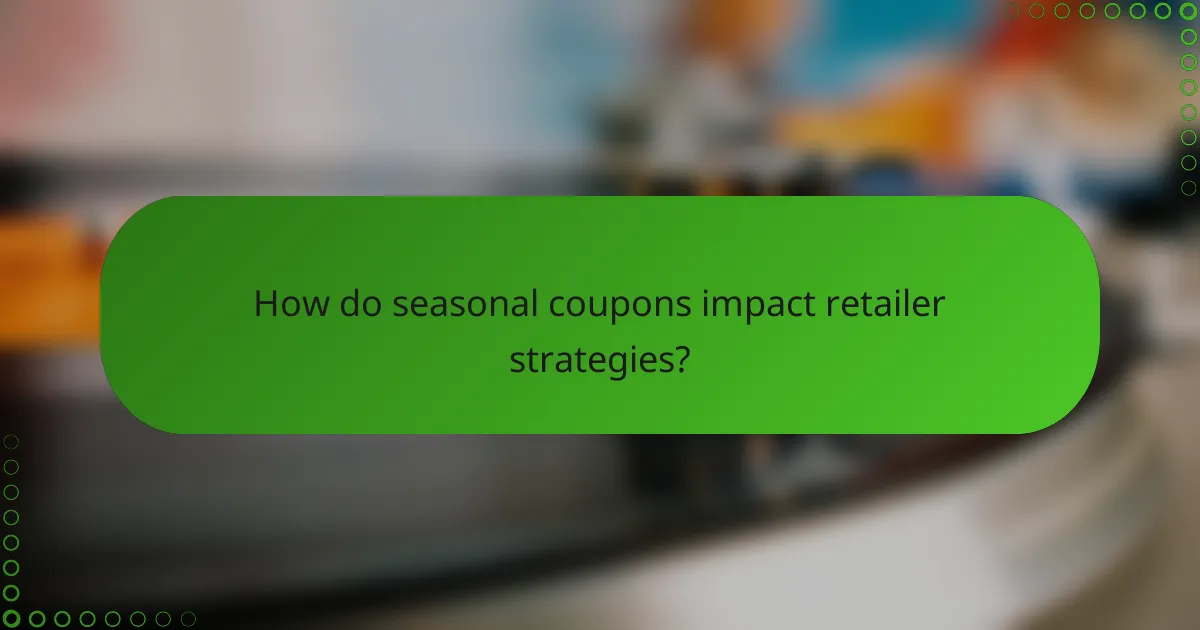
How do seasonal coupons impact retailer strategies?
Seasonal coupons significantly influence retailer strategies by driving sales and enhancing customer engagement during peak shopping periods. Retailers often adjust their pricing, inventory, and marketing tactics to leverage these coupons, aiming to attract more customers and boost overall revenue.
Enhanced customer loyalty programs
Retailers frequently integrate seasonal coupons into their customer loyalty programs to encourage repeat purchases. By offering exclusive discounts or bonus rewards during holidays, they can strengthen relationships with existing customers and attract new ones.
For instance, a retailer might provide a 20% off coupon to loyalty members during the holiday season, incentivizing them to shop more frequently. This strategy not only increases sales but also fosters a sense of belonging among customers.
Targeted marketing campaigns during holidays
Seasonal coupons enable retailers to implement targeted marketing campaigns that resonate with specific customer segments. By analyzing purchasing behavior, retailers can tailor their promotions to meet the preferences of different demographics, enhancing the effectiveness of their marketing efforts.
For example, a retailer may send personalized emails featuring holiday coupons to customers who have previously purchased related items. This targeted approach can lead to higher conversion rates and improved customer satisfaction during the busy holiday shopping season.

What are the challenges of using seasonal coupons?
Seasonal coupons can complicate holiday shopping budgets due to their expiration dates and the sheer volume of available offers. Shoppers may find it difficult to maximize savings while ensuring they meet the terms and conditions of each coupon.
Expiration dates and usage limits
Many seasonal coupons come with strict expiration dates and usage limits, which can lead to missed savings opportunities. For instance, a coupon might only be valid for a few days or require a minimum purchase amount, making it essential to plan purchases accordingly.
To avoid disappointment, check the expiration date before shopping. If a coupon is nearing its expiration, prioritize using it on eligible items to ensure you benefit from the discount.
Overwhelming number of offers
The abundance of seasonal coupon offers can be overwhelming, making it challenging to identify the best deals. Shoppers may encounter various promotions across different retailers, each with unique terms and conditions.
To manage this, create a list of coupons and their respective offers before shopping. Focus on the most beneficial discounts and eliminate those that do not align with your shopping needs. This approach can streamline the shopping experience and help maintain your budget.

What future trends are emerging in seasonal couponing?
Future trends in seasonal couponing indicate a shift towards digital platforms and personalized offers. Retailers are increasingly leveraging data analytics to tailor coupons to individual shopping behaviors, enhancing customer engagement and budget management during holiday seasons.
Increased Personalization
Personalization in seasonal couponing is becoming more prevalent as retailers utilize customer data to create tailored offers. This approach allows businesses to target specific demographics with relevant discounts, making coupons more appealing and effective.
For example, a retailer might analyze past purchase behavior to send personalized coupons for items a customer frequently buys during the holiday season. This strategy not only increases the likelihood of redemption but also enhances customer loyalty.
Mobile Couponing Growth
Mobile couponing is on the rise, with more consumers using smartphones to access deals. Retailers are developing apps and mobile-friendly websites that allow shoppers to easily find and redeem coupons while on the go.
As mobile payment options become more common, integrating coupons into these platforms simplifies the checkout process. For instance, a shopper can scan a digital coupon directly from their phone, streamlining savings during busy holiday shopping.
Integration with Social Media
Social media is increasingly being used as a channel for distributing seasonal coupons. Brands are engaging customers through platforms like Instagram and Facebook, offering exclusive deals to followers.
This trend encourages sharing among users, amplifying the reach of coupon promotions. For example, a retailer might run a campaign where customers can unlock a discount by sharing a post, creating a viral effect that boosts visibility and sales.







